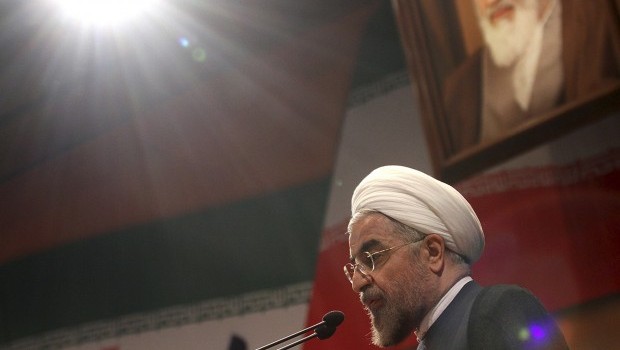
In this photo released by the official website of the office of Iranian President-elect Hasan Rouhani, Rouhani speaks in a conference in Tehran, Iran, Saturday, June 29, 2013 (AP Photo/Office of the President-elect, Hojjat Sepahvand)
Prior to the presidential election, held on June 14, USD 1 reportedly traded for IRR 36,000 on Iran’s unofficial open currency market. In contrast, in the last two weeks, the rial has strengthened by around 20 percent, reaching about IRR 29,000 to the dollar.
However, prices in Iran have remained high, and wholesalers believe that the increase in the value of rial is not going to be permanent due to foreign sanctions on Iran’s nuclear program.
As the value of rial fell, many Iranians converted their money into foreign currencies, with some storing it in cash in their homes. Rouhani’s election led to a mini-boom in the sale of dollars, as holders of US currency sought to convert some of their savings back into rials.
Elsewhere, the outgoing Ahmadinejad administration has come under fire for its final budget, which this year abandons the official exchange rate set by the central bank—IRR 12,000 to the dollar—for an estimation of the rial’s value on the open market.
Iranian economist Saeed Leilaz told Shargh newspaper: “President Ahmadinejad plans to pass the administration to Rouhani with a dollar valued at 24,000 that they forecast in their budget. This will put his administration in debt to the central bank. Simply put, this strategy will end in higher inflation and [expand the] money supply.”
Leilaz added: “such a tactic that happens overnight has political motivations behind it. The money supply has experienced a rise of 30 percent. But the Central Bank of Iran announced they would [aim] reduce it to zero percent. Such a shock to the economy of the country in the last days of the tenth government must have a political motive rather than economic logic.”
